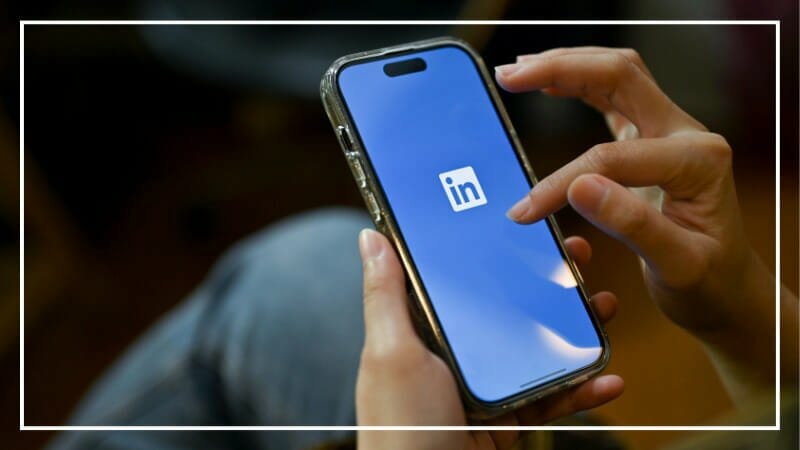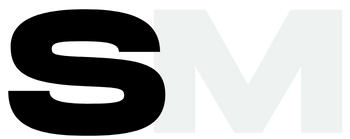Do you remember the Power Rangers?
I remember getting up super early (…6am is early for a kid), just to watch the NEW show where dudes wore cool-ass uniforms and had ninja moves!
And when they couldn’t hold off the bad guy, they combined their powers by chanting something about Morphine?
No that’s not right…
Anyways, they teamed up and created this super machine-looking thing, right!?!
This is how they always won.
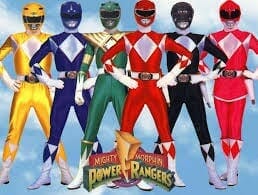
By the power of TEAMWORK (deep stuff here folks)!
Well, what if we could do the same?
You and me… With our best social networks.
What if we could take our two most favorite and awesome platforms and turn them into a super marketing machine?
“With our powers combined, we are… FacedIn… LinkBook…” (oh wait, that’s Captain Planet… ?).
Whatever!
You catch my drift, right?
LinkedIn and Facebook.
Separate they are amazing, but together?
They’re like the Golden State Warriors (circa 2016).

But how do we utilize both platforms, together, to make the magic happen?
It’s all about how people, on these platforms, operate while ON the platform itself.
So, we need to dive into their mindset to better understand how to leverage our messages and offers.
Platform Mindset
Understanding the mindsets of people on both of these networks is critical.
We consider LinkedIn a professional network platform, while other platforms like Facebook are considered social network platforms.
The mindset of those on professional networks is purposeful, while on social networks they have a casual mindset.
When folks go on casual networks, like FB, there are four major reasons they’re logging in:
- Socialize
- Stay In Touch
- Be Entertained
- Kill Time
As opposed to…
When people go onto LinkedIn they have four main priorities:
- Maintain Professional Identity
- Make Useful Contacts
- Search for Opportunities
- Stay in Touch
This means if you‘re on LinkedIn, don’t want to see a video of your cat (…if this is you, STOP now!!), save that for FB.
This also means you need to change your message per platform.
They want to connect and build relationships – keyword there: Relationships!
LinkedIn as a Relationship Building Platform
Keep the word “Relationships” as the predominant thought in your head.
We are here to build and nurture relationships…
If this is not your intention, then you are wrong!!
Yes, I said that correctly. You. Are. Wrong.
Your business is not reaching its full capacity if you are trying to close the deal without some foreplay?
Of course, I understand that it’s about the bottom-line for 99% of business owners and managers out there AND if that is the case, you need to also understand that the bottom-line is DIRECTLY affected by the relationships you build (and those you don’t).
Now, the reason I am starting with LinkedIn is that you can begin narrowing down “who” it is you are looking to start connecting with.
Don’t get me wrong, you can do the same thing with Facebook specifically, but it will cost you more time & money then you really need to be spending.
Not only can you connect with people on LinkedIn for free, but you can also do it at scale (a conversation for another time).
Lock In On Your Target With LinkedIn
The best way to find EXACTLY who you want to target is to be using LinkedIn’s Sales Navigator.
With it, you can break down your audience persona(s) with its filtering system.
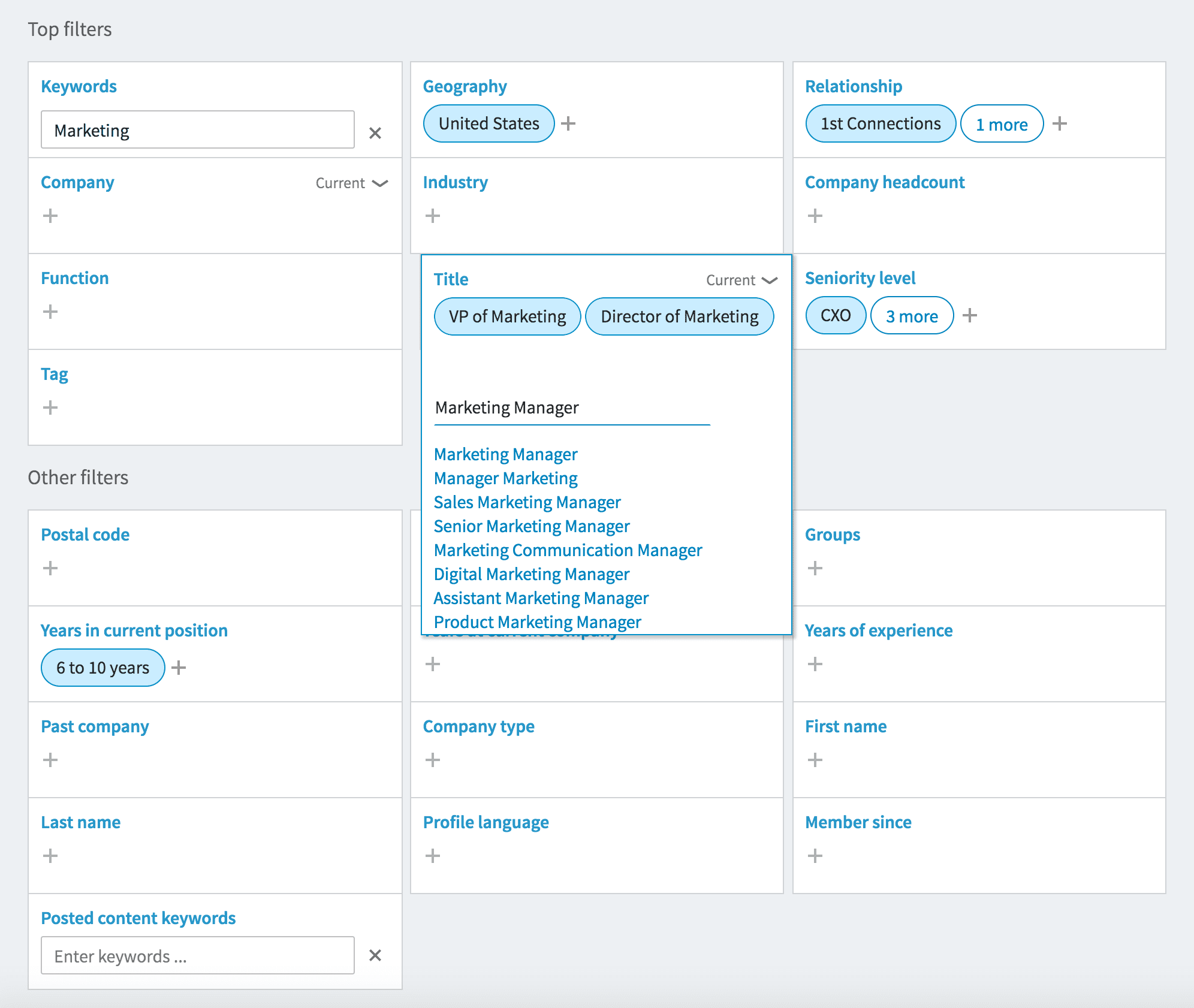
The most important filters you should be using:
- Geography
- Title
- Industry
- Seniority Level
- Years in Current Position
- Relationship (their relationship to you, NOT are they in a relationship)
Sales Navigator is a product you’ve got to be able to shell out around $80/mo on, so if you cannot afford this (or just don’t want to use it) you can use LinkedIn’s search query to find who you are looking for as well.
The downside to this is you’ll have a limited amount of searches per month…
Yes, they want your money and they want you to pay for their software.
Use the LinkedIn search the same way:
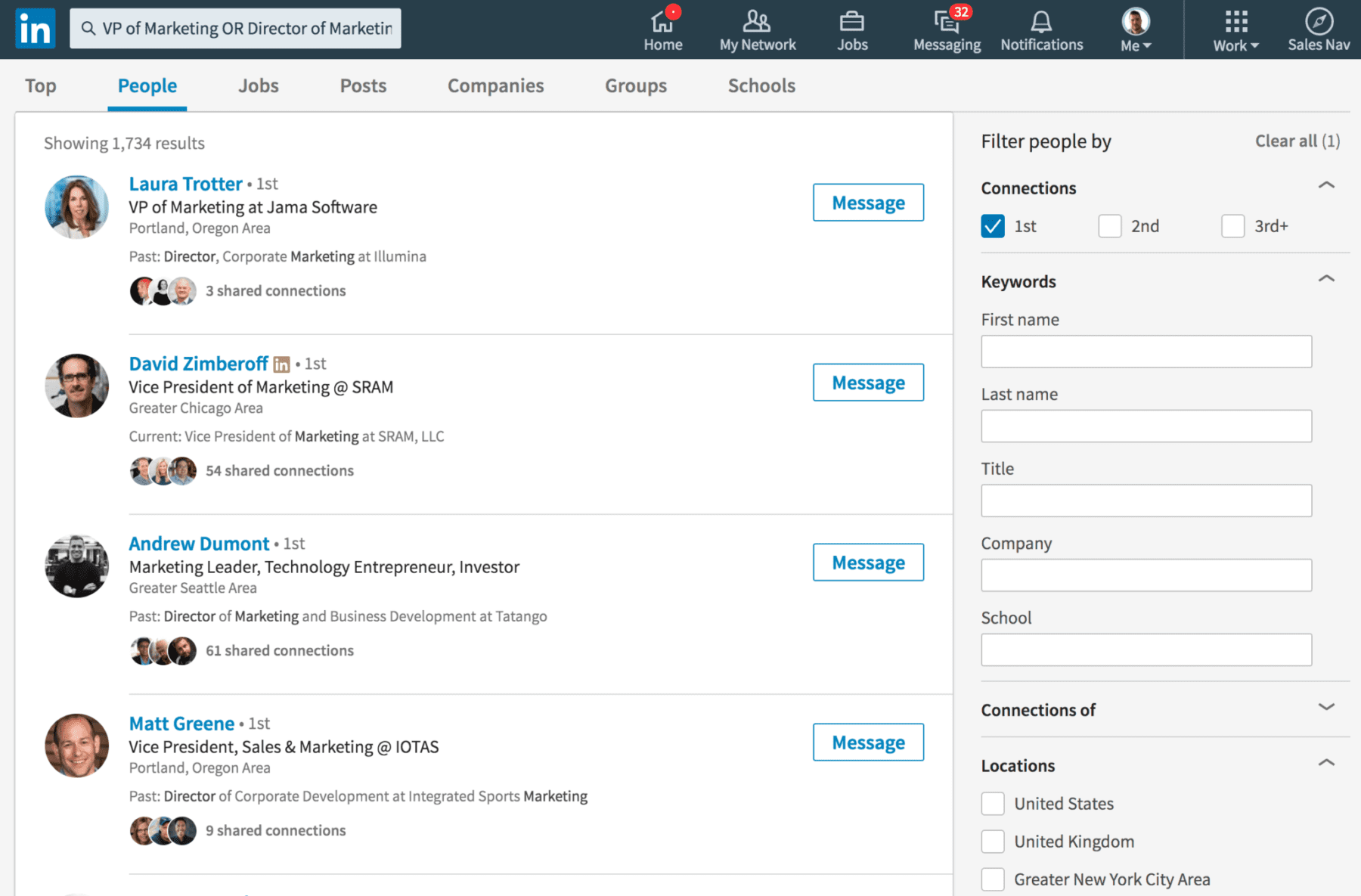
And make good use of the boolean search terms to help narrow it down.
Reach out to these folks and connect with them.
Use some automation to help spur the conversation.
The point is, you want them to remember who you are OR at the very least recognize your name/brand.
Once you made some connections, export your connections from LinkedIn:
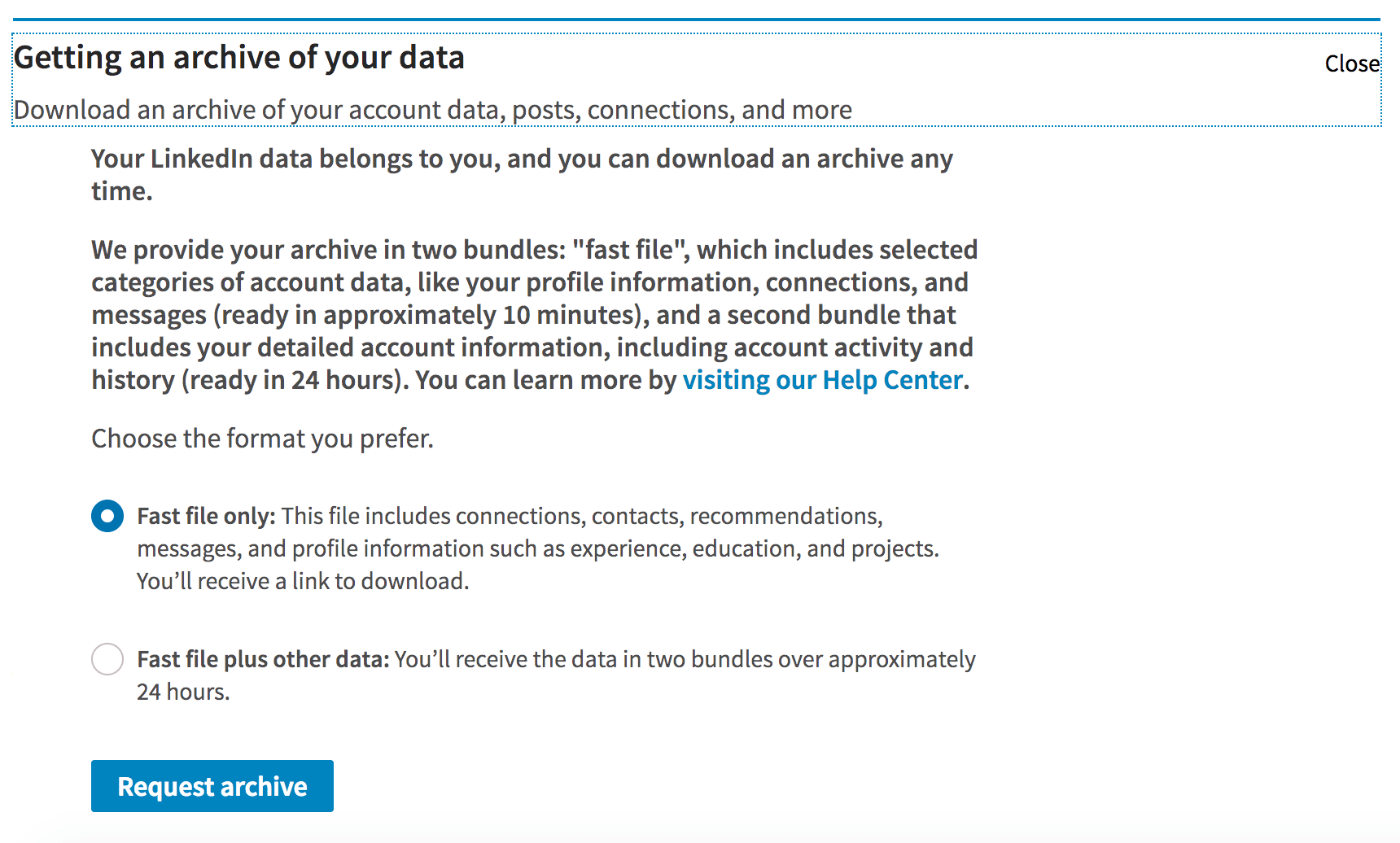
After you have received your CSV file, you are going to want to upload your contacts to Facebook, as a Custom Audience, to begin your targeting & retargeting campaigns.
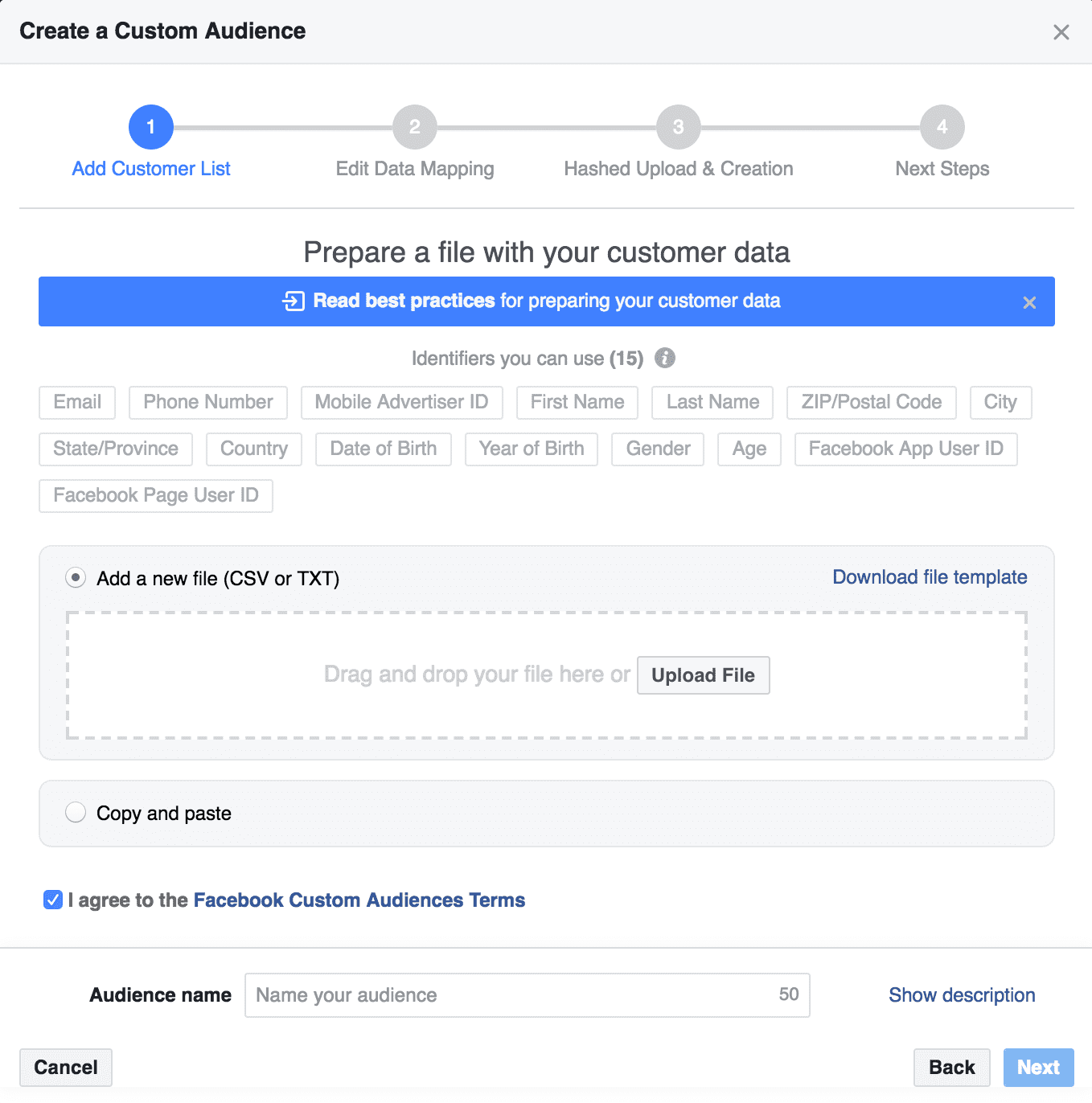
Now that this is complete, you can begin targeting this audience with relevant messages and offers.
…notice how I said relevant?
Don’t lose out on the time and energy you’ve put into building relationships by sending them some BS ads.
Sequential Advertising
You may have or have not heard this term before, but the idea behind it is similar to a funnel.
I know this word has been thrown around a lot lately, however, it really is the best way to describe it.
You have top-of-funnel ads that are about building aspirations and brand awareness.
Middle-of-funnel ads which are about engaging and connecting with your audience.
Then, of course, bottom-of-funnel ads which are all about converting those connections into customers/clients.
You MUST also have continuity throughout your sequences, as well.
Otherwise, you stand a good chance of losing the access you worked so hard for.
Ad continuity stretches from one ad to the next.
This includes the:
- Creative
- Ad Copy
- Optin Pages
- Landing pages
- Sales Pages
You get the picture!!
It’s also really important to understand that each part of the sequence has its own function…
The purpose of the ad is to get clicks (or views, or engagement, whatever the objective is).
The purpose of the opt-in page is to get an opt-in.
The purpose of the sales page is to sell.
One of the biggest mistakes you’ll see is when someone is using the ad itself to sell…
This is a huge mistake and one that will lead to lower conversions.
Once you have your sequences built it is time to start retargeting the uploaded audience.
Retarget on Facebook
Here is where the fun part begins.
You have your sequences built out – ready to start advertising.
You’ll want to begin by running some tests (always be testing) to be able to optimize based on your goals.
When looking at the metrics and deciding what KPI’s to look out for, here’s some data to keep in mind…
For Video Views, you should have no problem getting at or below $0.01 per view (a video view is considered 3 seconds).
When optimizing for clicks you must remember that Facebook is an auction-based system.
Over time the cost-per-click will go up and the CPC is very industry dependent…
Here is a breakdown by industry:
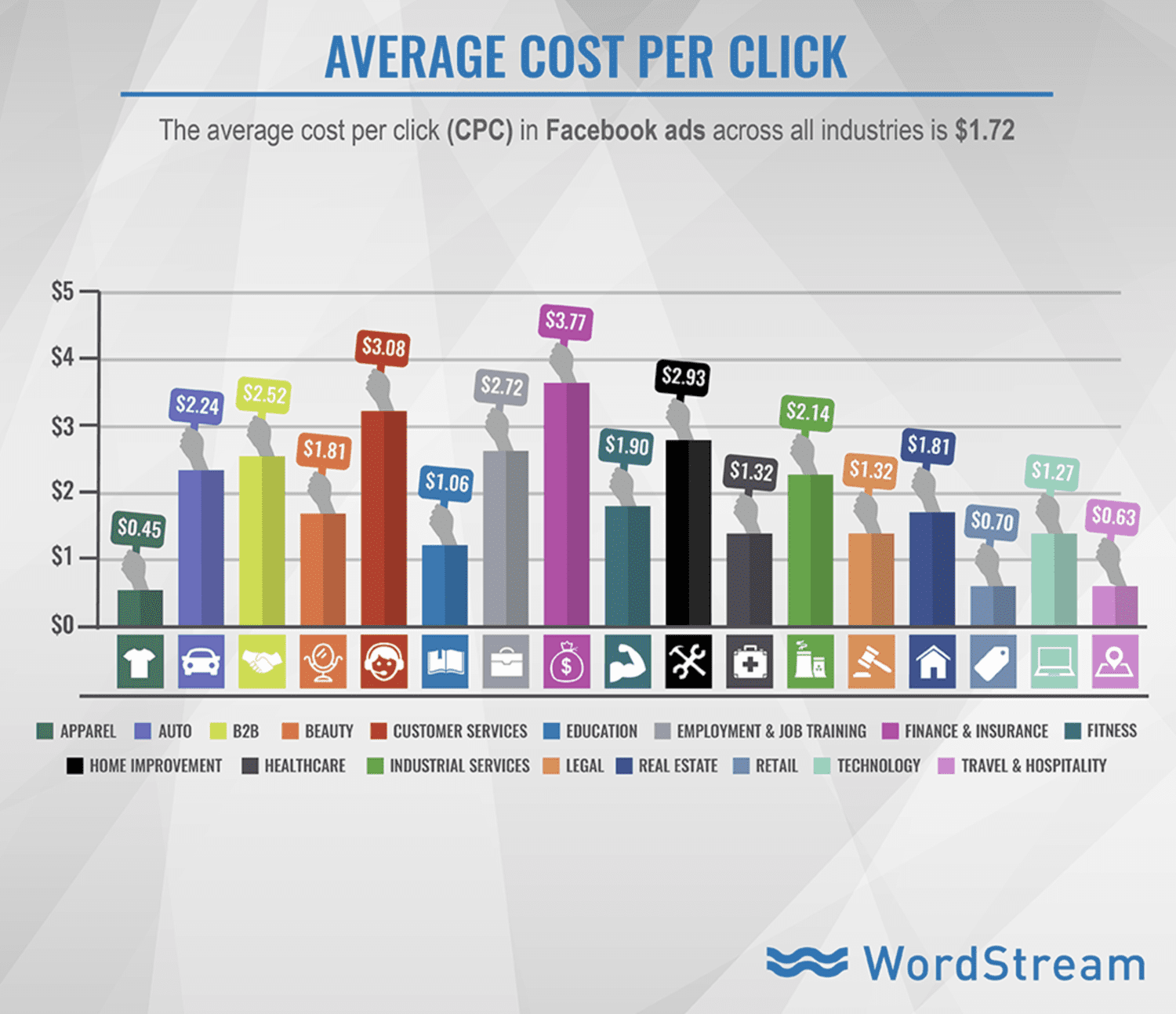
Created By WordStream: Facebook Advertising Benchmark
Although the average CTR across the board is 0.90%, a CTR of 2% or higher is what you should be aiming for.
If you have a decent CTR, but visitors just aren’t converting then it’s time to look at your funnel pages.
A decent bounce rate is 60% or less.
Conversion Rate KPI’s:
- 0-14%: Bad – change it up, or problems with targeting
- 15-29%: Decent – Targeting is okay, optimize page(s)
- 30-39%: Great – Keep split testing and optimizing
- 40%+: Amazing – Cross your fingers it stays this way!!
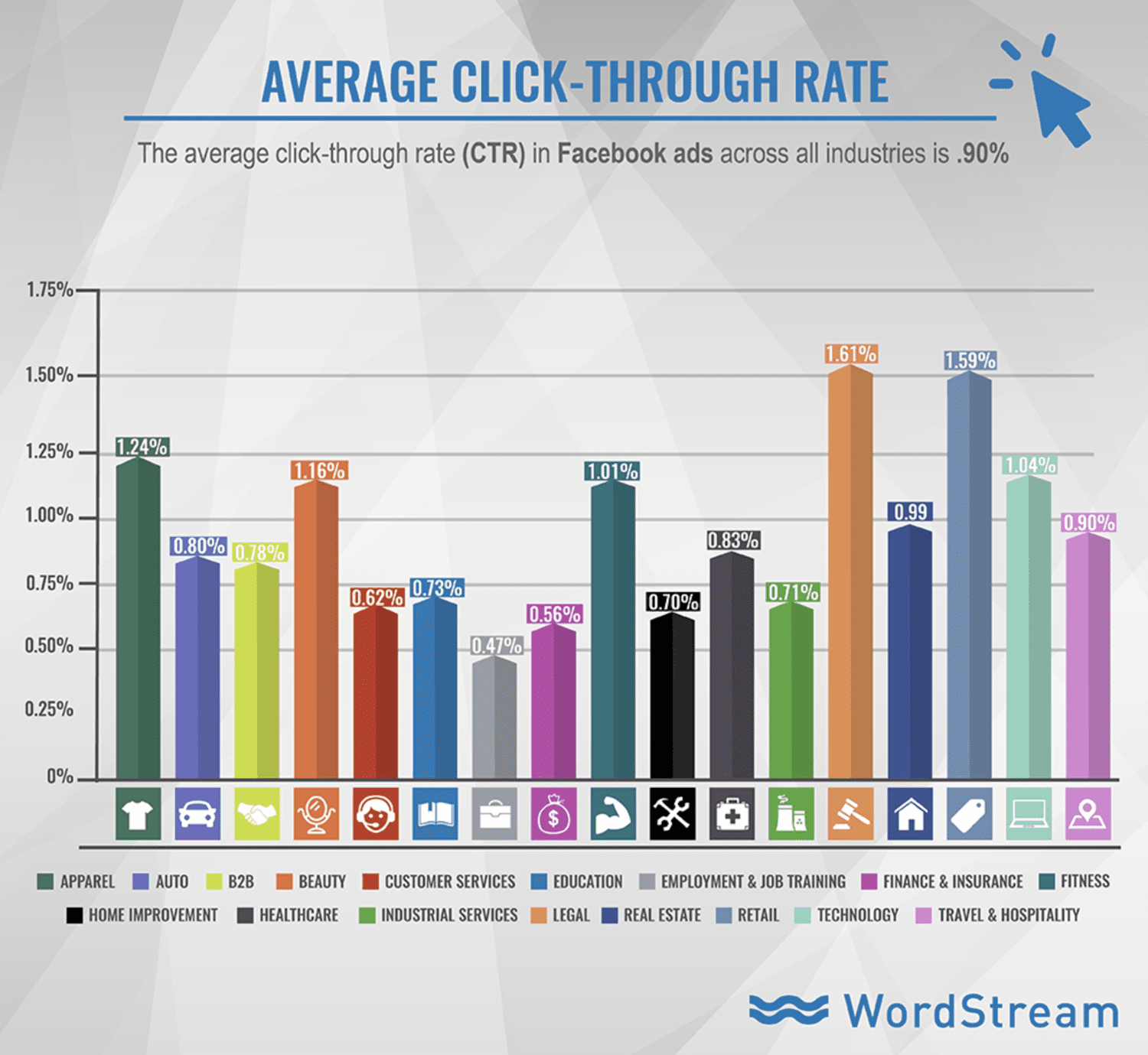
If you are having trouble with conversions, look into split testing pages and changing one thing at a time.
Whether that is the color of a button.
The background image.
The copy.
How long or short the page is.
You can test them a million different ways from Sunday to find which works best for your audience.
Make assumptions at first, but don’t be too romantic about it all. It may or may not be what converts the best…
And that is really what you are after right?
Lastly, Relevance Score
One of the most frequent questions I get is about the “Relevance” score.
It ranges from 1 to 10 and is a way for Facebook to tell you how relevant your ad is to the audience you are targeting.
NOW…
This is not an accurate KPI to judge your ads off of.
I have seen relevance scores of 10 run really well and I’ve seen ads at 3 that are just as amazing.
My own personal take on relevance score is that it’s a number that lets you know if there is any room for improvement.
If it ain’t broke, then leave it the hell alone!!
As long as you are seeing decent metrics, low cost-per-acquisition, and good ROI then you are in the golden zone.
Scale the campaigns that are working.
Drop the ones that aren’t.
And ALWAYS be testing new ads, markets, & audiences.
